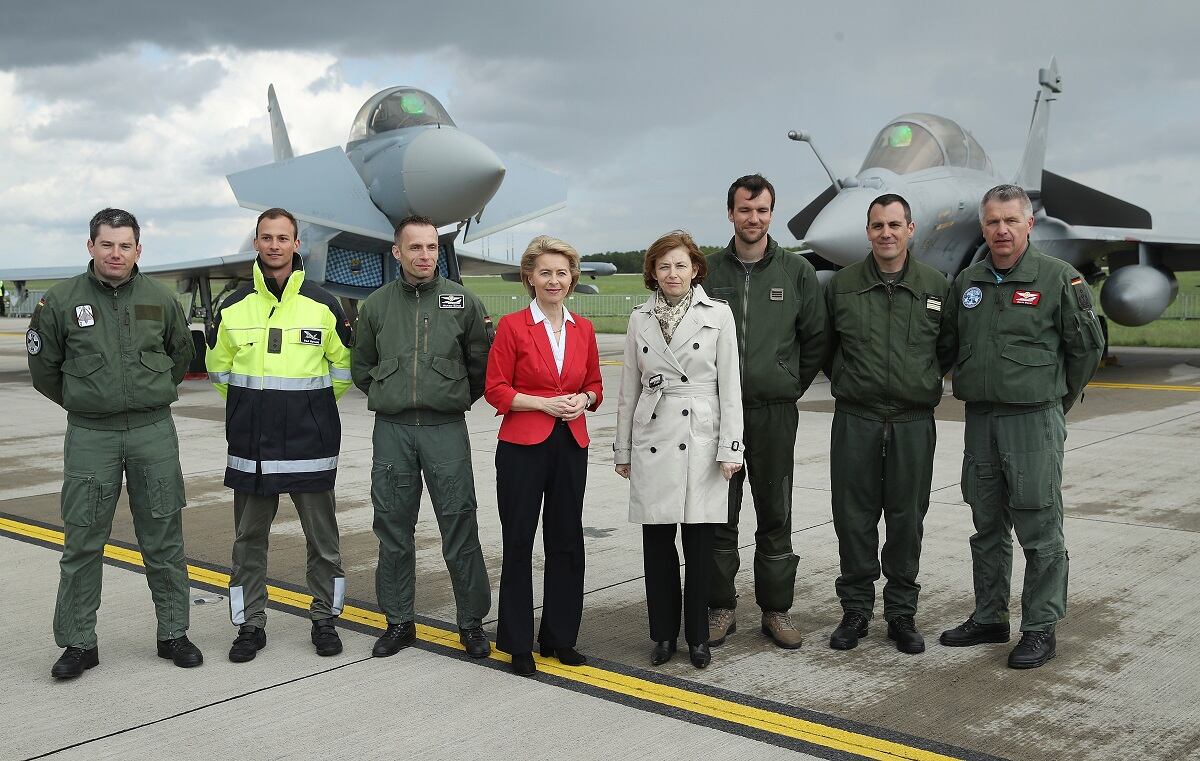FARNBOROUGH, England — BAE System’ surprise presentation of a full-scale model for its Tempest fighter concept caught the Farnborough International Airshow by storm, but one feature of the design especially stood out — the cockpit.
That’s not normally the part of a plane on which people would focus, but there is something very different about Tempest’s design in that regard. When visitors looked at the dashboard, they saw none of the usual gauges and dials. Instead, a totally blank, black screen looked back at them — until they put on a helmet and the heads-up display appeared.
BAE is gambling that its concept for a virtual cockpit, which can be changed for pilot preference and upgraded easily to reflect new capabilities, will pay dividends for Tempest. And according to Nick Colosimo, principal technologist for disruptive tech at BAE, such virtual cockpits are the way of the future.
“It is, in my opinion, probably the best augmented reality technology anywhere in the world,” Colosimo told reporters at the show on July 18, before listing what he sees as the benefits of such an approach.
Click here for more from the 2018 Farnborough Airshow.
Firstly, the system is lighter than a traditional cockpit control suite, which let designers shave weight off the design, an ongoing challenge when building something meant to fly. But secondly, and more importantly, the system allows for modular capabilities.
“One certainty about the future operational environment is a degree of uncertainty, and therefore we must have systems that are flexible and upgradable,” Colosimo said.
“We believe that having systems that you can change through, maybe software change, or customize the position for the displays and controls when you add new weapons, add new sensors to the platform, that should reduce time and ensure that industry is much more agile and can respond to customer changes as the operational environment demands.”
He also noted the human impact, with each pilot able to customize the layout to what fits him or her best — something Colosimo called “this great potential to improve human performance through a combination of what I might describe as unlimited display and control surface that is also intuitive as well. Easy to use, easy to operate.”
RELATED

But the cockpit is not the only disruptive technology planned for Tempest. The news release around the plane caught attention with its pledge to use directed-energy weapons, as well as artificial intelligence.
Colosimo called directed-energy technology a “reality on the battlefield as we approach the 2030s, a reality on combat aircraft.”
“We are provisioning for such systems to enable survivability or to boost survivability of the aircraft by neutralizing incoming missiles,” he added.
As to AI, he was less specific about how that might work, but acknowledged it must be “scalable, resilient, trusted autonomy” that is “human-centric” in nature.
“ ‘Human in the loop’ and ‘human on the loop’ is the terminology we use. So it’s a topic that we’ve got to be thoughtful about and something we have been thoughtful about for a very, very long time.”
Aaron Mehta was deputy editor and senior Pentagon correspondent for Defense News, covering policy, strategy and acquisition at the highest levels of the Defense Department and its international partners.







